.webp?2025-12-17T15:00:29.367Z)
Spotify Wrapped ideas make stats lovable
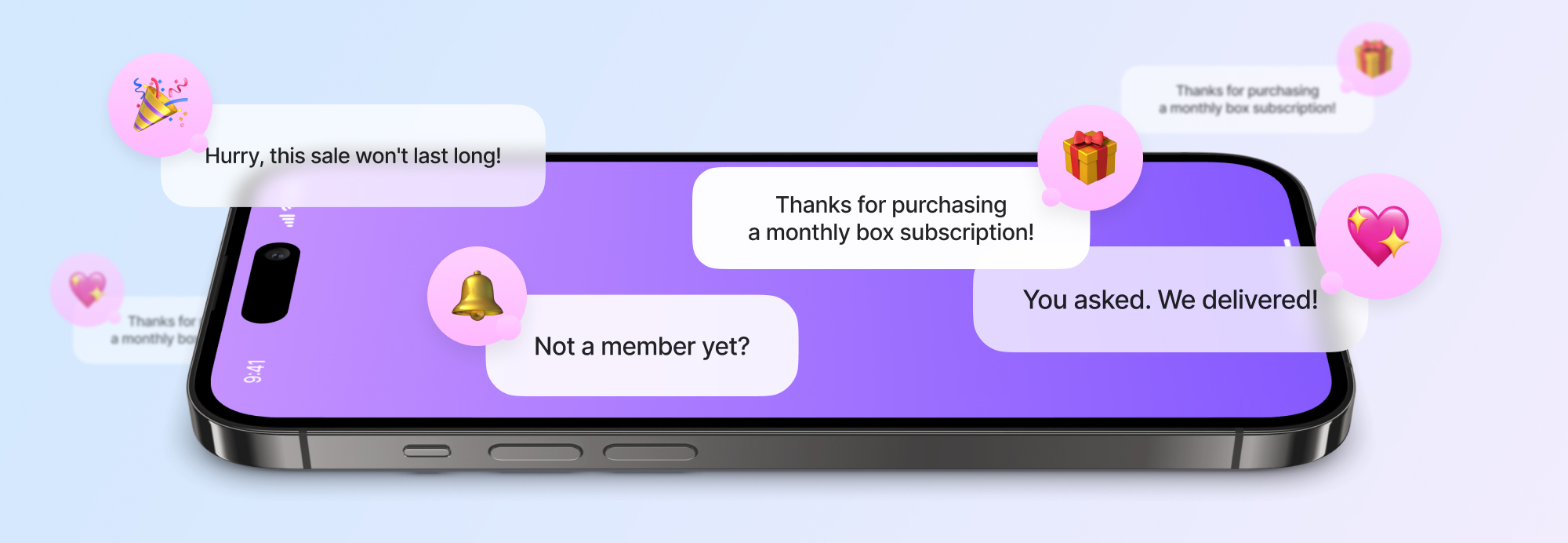
Promotional Messages That Sell
Karina
Author @ InAppStory
Sending a promotional message isn’t what it used to be. People get hundreds of notifications, emails, and alerts every week. So how do you make yours stand out?
Promotional message strategies can still work wonders, especially when thoughtfully delivered through SMS, email, in-app banners, or push notifications. Whether you're announcing a holiday offer, teasing a product launch, or sending a quick reminder, the right marketing message can drive engagement, boost conversions, and build trust.
In this guide, we’re focusing on how to send it well. From simple marketing message formats to professional text message examples that feel timely and personal, we’ll walk through the essentials. You'll find sample promotional messages to customers, effective promotion message templates, and ideas for seasonal campaigns that don’t feel forced.
What Are Promotional Messages?
A promotional message is any communication, typically from a brand or business, that encourages people to take some sort of action. This might be a discount coupon, a sign-up request, or even a subtle nudge toward a newly launched feature. Think about:
- Billboards: Old-school, but still around.
- Web Banners: Those ads we see sprinkled across websites.
- Social Media Posts: Sponsored campaigns on Instagram or Facebook.
- Emails & SMS: The classics — still big players in the promo world.
- Push Notifications: Short, sharp, and sent directly to our home screen.
- In-App Promotions: Messaging that pops up or slides in while we’re already using an app.
All of these are promotional messages in one form or another. The key difference? Where and when we encounter them. For instance, we might check our inboxes hours after an email arrives or might not check them at all.
But in-app promos catch us on the spot. We’re already browsing, clicking, and paying attention. That’s what makes mobile apps fertile ground for promotional messaging.
Why Mobile Apps Amplify the Concept
Mobile apps are like little ecosystems where our customers live, shop, play, and explore all in one place. Here’s why that environment is a big deal:
1. Immediate User Attention
When users open our app, they’re already hooked into our content. We’re not competing against endless browser tabs or streams of social media updates. If a promotional message pops up in this focused environment, there’s a higher chance it’ll get noticed.
2. Engagement Opportunities
Mobile apps allow for visuals and interactive elements that can’t always be replicated in an email or on a static web page. That means we can deliver a quick quiz, a mini-game, or a swipeable in-app story to show off new products.
3. Real-Time Feedback & Testing
App-based promos can collect instant user feedback. We can see which messages drive clicks, which ones get closed immediately, and how engagement metrics shift in real time.
The Psychology of Promotional Messaging
Understanding the psychology behind a promotional message helps improve its structure, timing, and performance. While design and delivery matter, the emotional and cognitive triggers embedded within the message often determine whether a user taps, clicks, or ignores it entirely.
Three core psychological principles frequently used in marketing messages are scarcity, urgency, and personalization.
- Scarcity appeals to the fear of missing out. Messages such as “Only 3 left in stock” or “Limited-time access” suggest that the offer may disappear soon, prompting quicker decisions.
- Urgency focuses on time sensitivity. Phrases like “Ends today” or “24-hour flash sale” encourage immediate action.
- Personalization adds relevance. A marketing message that includes a user’s name, purchase history, or specific preferences increases the likelihood of engagement. For example: “You forgot this in your cart, Alex. Want 10% off to complete your order?”
These techniques are often combined in promotional text messages, push notifications, or in-app banners to drive response rates.
Promotional campaigns can trigger either emotional or rational responses.
- Emotional appeals emphasize feelings like joy, nostalgia, excitement, or even urgency. For example: “Give them a gift they’ll remember” or “Treat yourself this weekend.”
- Rational appeals rely on logic and value. These messages focus on discounts, product features, or comparisons. For example: “Save 30% on all accessories” or “Now with faster shipping.”
The choice between emotional and rational tone depends on the audience segment, timing, and campaign objective. Many high-performing promotional messages mix both.
These visual cues should be adapted to the platform and user expectations. For example, what works in a retail push message may not apply in a financial services app.
Why Do Promotional Messages Matter?
Promotional messages are essential because they create awareness and encourage specific user actions, such as making a purchase or signing up for a subscription. They can appear across multiple channels such as email, SMS, web banners, social media posts and often serve as a brand’s first direct communication with potential customers.
When crafted responsibly, promotional messages help build trust and pave the way for deeper engagement. When used carelessly, however, they can irritate users, damage brand perception, and lead to unsubscribes or spam complaints.
Promotional Messages in Mobile Apps
In mobile apps, promotional messages have an even greater impact. Users typically open an app with a clear purpose — whether it’s exploring products, tracking fitness goals, or browsing content. Delivering an offer or announcement at this moment of high engagement significantly boosts the chance of a positive response.
Moreover, in-app promotions can be highly interactive, using elements like swipeable stories, mini-games, and personalized recommendations. These dynamic formats capture attention more effectively than standard emails or banners.
On the flip side, overusing in-app promotions or sending irrelevant offers can lead users to close the app or uninstall, making it crucial to balance frequency and personalization.
Promotional Message Examples and Templates
Promotional messages are a cornerstone of modern marketing, whether we’re communicating through a promotional text message, an in-app message, or a push notification in mobile apps. They can spotlight a discount code, announce timely deals, or invite user feedback often in just a few words.
Below, we’ll explore a variety of examples and templates to help you design effective, user-friendly communications without overwhelming your audience.
1. Welcome/Onboarding Message
Example Text: “Welcome! Here’s 10% off your first order. Tap to explore our top-rated items now!”
Why This Works:
- Encourages users to engage immediately.
- Combines a simple greeting with a clear incentive.
- Ideal for both SMS and in-app notifications.
Enhancement Tip:
For mobile apps, consider layering interactive visuals (like an introductory story sequence) to guide new users through key features.
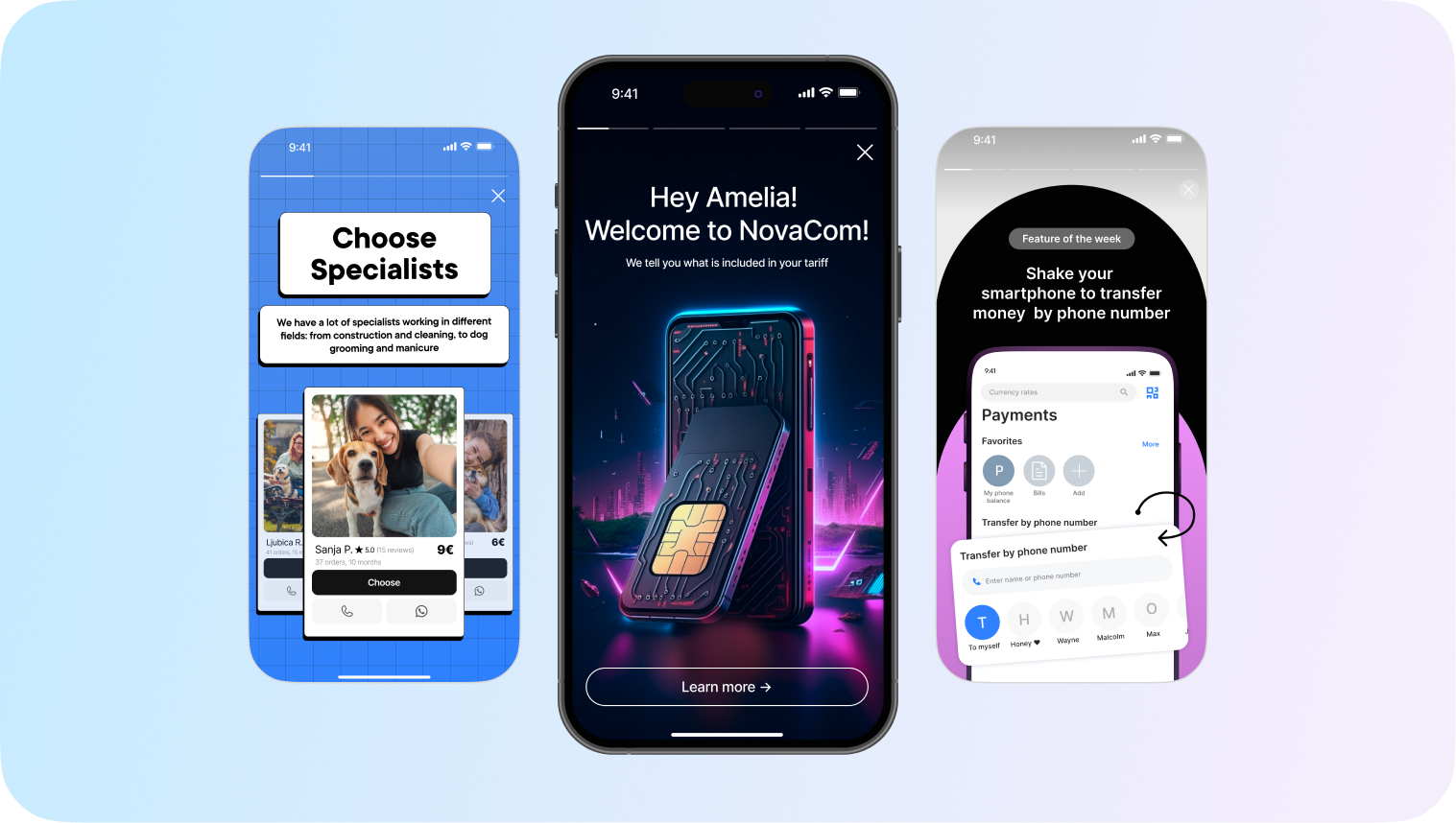
2. Limited-Time Discount
Example Text: “Flash Sale Alert: 25% off all accessories for the next 24 hours. Claim your discount code now!”
Why This Works:
- Creates urgency with a defined time limit.
- Clear call to action prompts immediate clicks.
- Perfect for SMS blasts, push notifications, or quick in-app banners.
Enhancement Tip:
Use countdown timers or mini games in your app to boost excitement around time-sensitive deals.
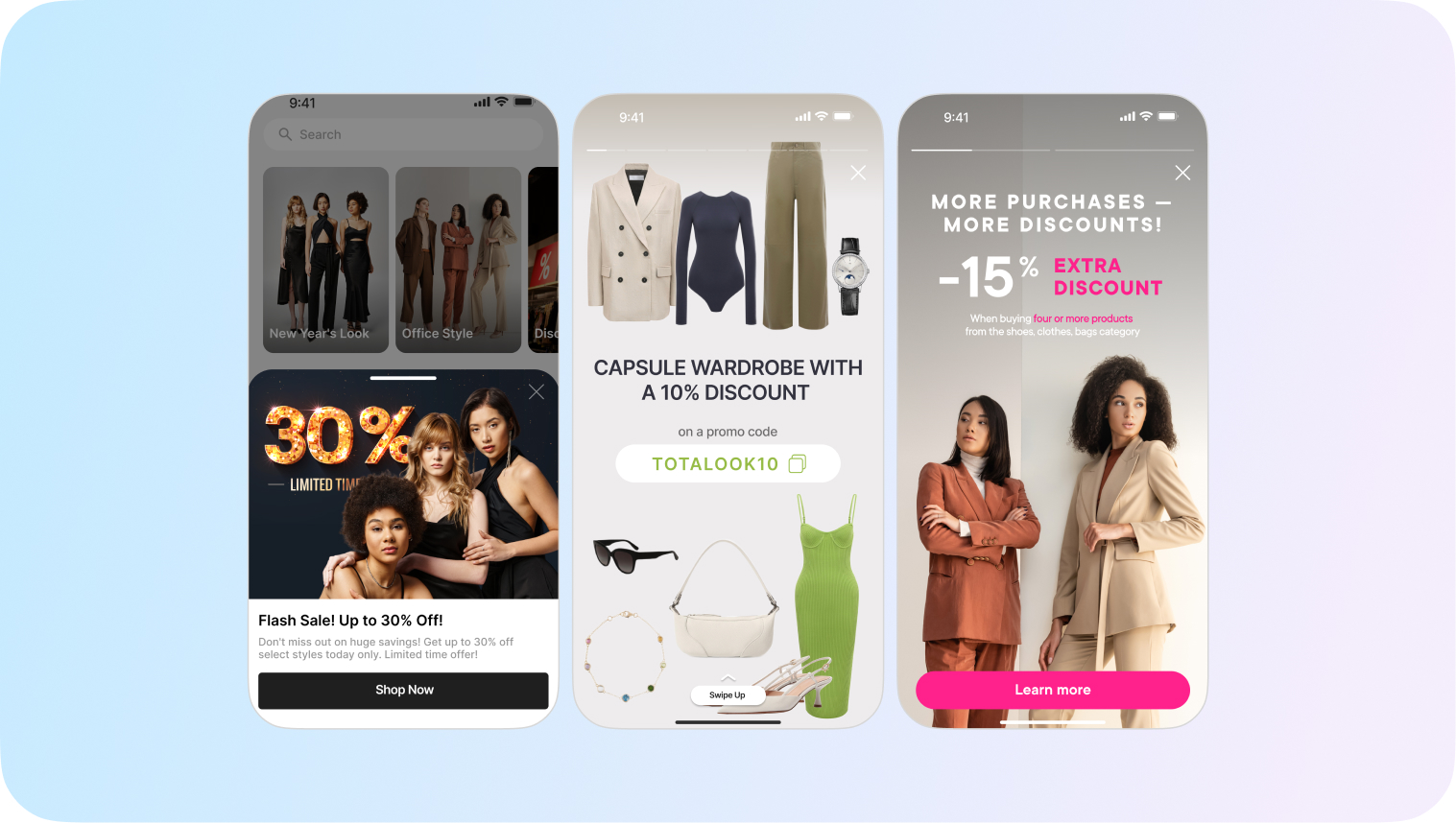
3. Event Reminder
Example Text:“Don’t miss our live Q&A session tomorrow! Discover new app features and get exclusive perks.”
Why This Works:
- Drives awareness of upcoming events.
- Encourages users to engage with community-driven activities.
- Can be sent via SMS or in-app pop-ups a day before the event.
Enhancement Tip:
Pair with interactive stories that preview the Q&A topics or introduce the guest speakers in a fun, swipeable format.

4. Re-Engagement Prompt
Example Text: “We miss you! Come back and enjoy a 20% off coupon on your next purchase.”
Why This Works:
- Appeals to inactive or dormant users.
- Uses a friendly tone to re-establish connection.
- Works well in push notifications or SMS marketing.
Enhancement Tip:
Add a personal touch by referencing recent items the user viewed or purchased. Interactive features (like short quizzes) can also revive interest in a more creative way.
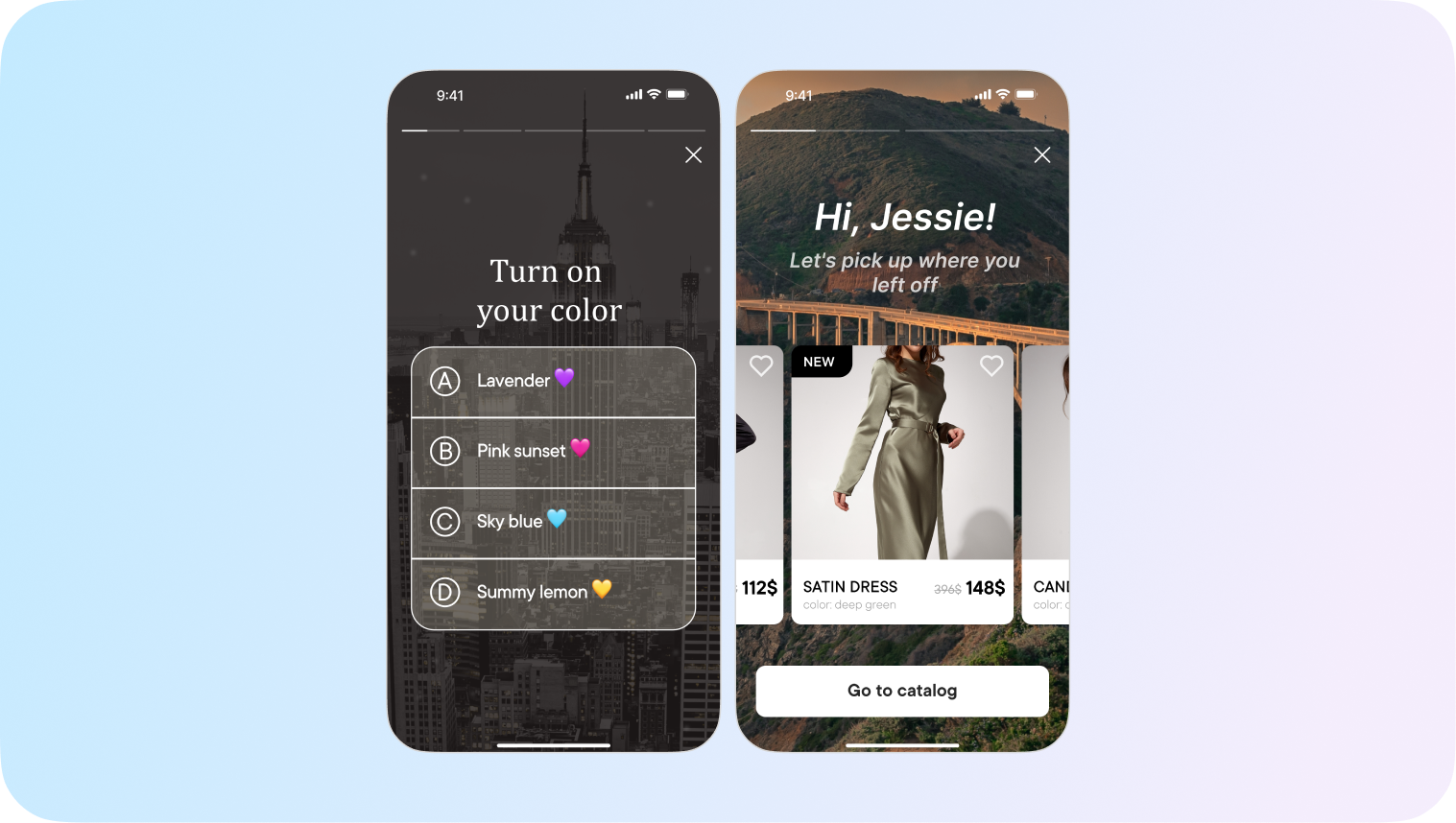
5. New Product Announcement
Example Text: “Introducing Our Latest Release: Check out the brand-new feature for a faster, smoother app experience!”
Why This Works:
- Generates excitement around new offerings.
- Straightforward wording clarifies the benefit.
- Suitable for brief SMS, in-app banners, and push notifications.
Enhancement Tip:
Use a multi-frame in-app story showcasing screenshots or video clips of the new feature. This gives users a quick glimpse of what they’ll gain by updating or diving deeper into the app.
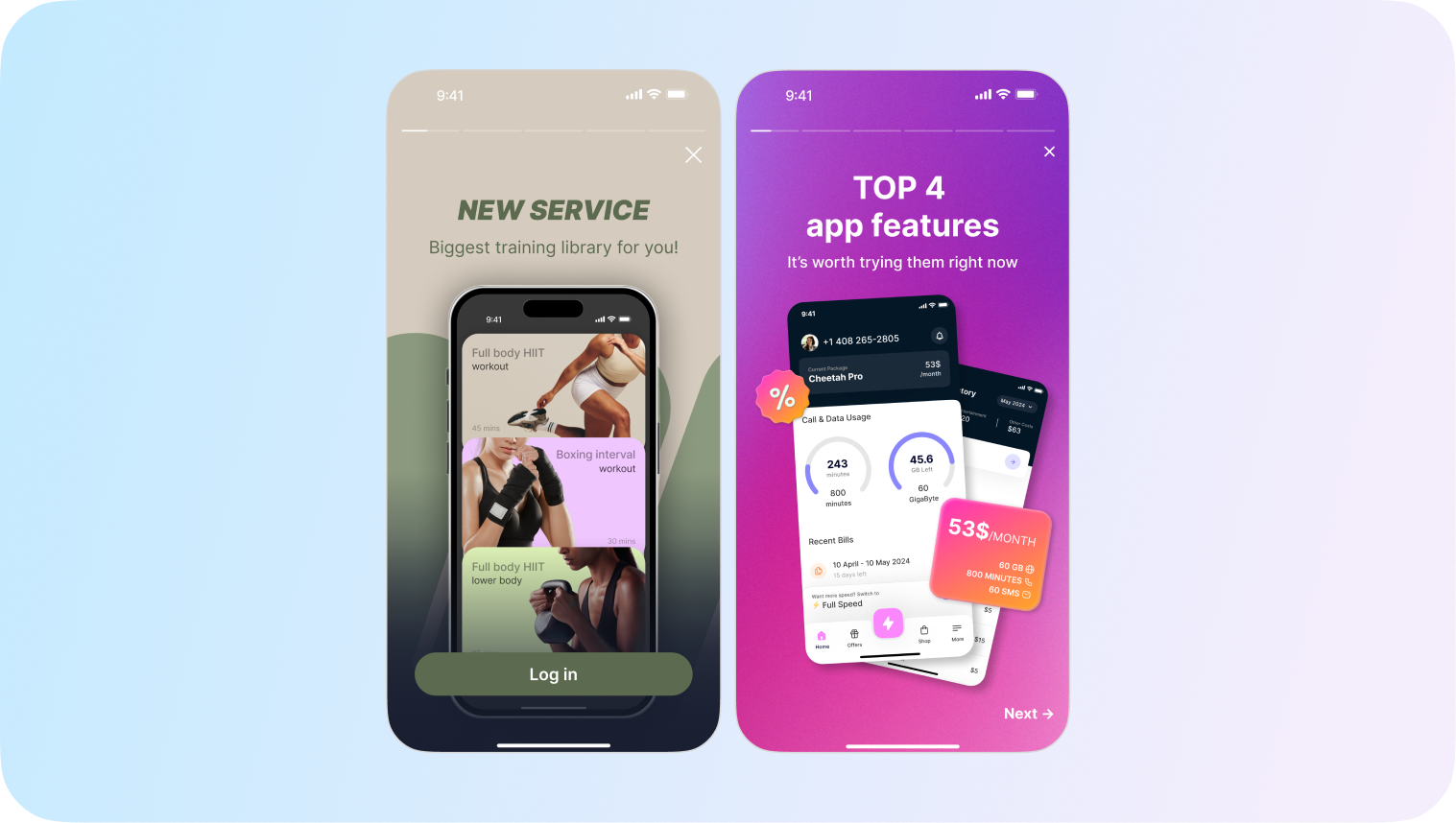
6. Survey or Feedback Request
Example Text: “Help Us Improve! Complete a 2-minute survey and earn 50 loyalty points.”
Why This Works:
- Shows that user opinions matter.
- A small reward often boosts response rates.
- SMS or in-app messages can both drive engagement quickly.
Enhancement Tip:
Integrate a simple poll, quiz, or rating widget within the app to gather feedback. This keeps users in one place, making it more likely they’ll follow through.
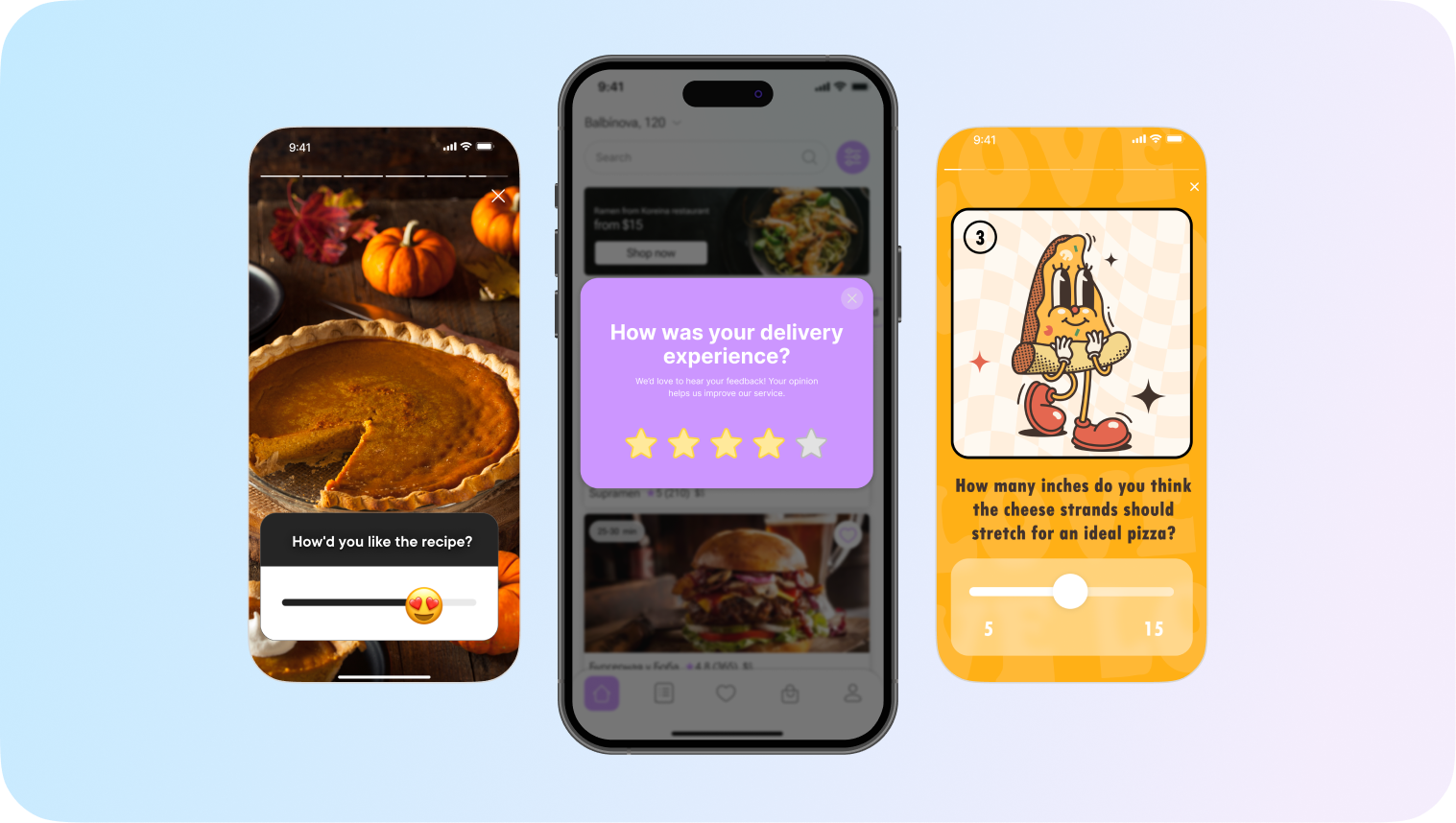
Subtle Ways to Elevate These Templates:
- Segment and Personalize: Whenever possible, tailor messages based on user behavior, location, or past purchases.
- Use Interactive Elements: Mini games, polls, or swipeable stories can turn a simple promotional message into a memorable experience.
- Test Frequency and Timing: Avoid overwhelming users by spacing out promotions. Also consider the best time of day for your audience.
Common Pain Points Around Promotional Messages
So, why do promotional messages cause headaches? Promotional messages, whether they’re text campaigns, email blasts, social ads, or even in-app pop-ups, are meant to spark action. Yet they often stumble over the same set of challenges, from audience fatigue to measurement woes. Below are four issues that come up again and again, plus a few pointers on how to address them.
1. Audience Overexposure
Overloading customers with too many or irrelevant messages: think daily sale alerts or constant “exclusive” offers that feel anything but special.
Why It Matters
- User Burnout: When promos become noise, customers unsubscribe or tune out.
- Damaged Credibility: Repeated, generic blasts make it harder to stand out or seem genuine.
How to Handle It
- Segmentation Is Key: Split audiences based on purchase history or interests.
- Timing Over Quantity: Space out messages and sync them with user activities.
👍 In-app notifications can be less disruptive if paired with personalized timing like a reminder after a relevant action.
2. Resource Gaps (a.k.a. “We Don’t Have the Time or Tools”)
Lack of bandwidth or complex workflows can slow down promotional campaigns. Marketing teams need creative freedom, but they’re often reliant on developer resources or multiple tools to execute a single promo.
Why It Matters
- Missed Windows: Time-sensitive offers lose their punch if delayed.
- Team Frustration: Constant back-and-forth with dev teams can stifle marketing agility.
How to Handle It
- Centralized Platforms: One dashboard for email, text, or social promos minimizes tool-juggling.
- No-Code Solutions: Non-technical staff can update campaign visuals, messaging, or layouts without help from developers.
👍 If you’re exploring a mobile app channel, a single integration can let marketers roll out new in-app promos fast with no extra coding required.
This is where InAppStory steps in. Designed as an all-in-on solution for mobile app engagement, InAppStory combines cutting-edge tools with ease of integration and expert support.

Why choose InAppStory?
- Fast integration: With its lightweight SDK, InAppStory allows you to integrate visual engagement tools starting from 1–2 days, with the exact timeframe depending on the app’s complexity.
- Comprehensive toolset: Features like full-screen stories, dynamic onboarding, gamified challenges, and targeted in-app messaging make it a one-stop solution for all engagement needs.
- No-code flexibility: A visual editor empowers marketing teams to create and launch content instantly, freeing up developers for other tasks.
- Expert guidance: InAppStory’s team offers tailored support at every step, from integration to content optimization.
Whether it’s onboarding, engagement, or monetization, InAppStory ensures your app doesn’t just look good — it works better.
3. Audience Segmentation & Personalization
Broadcasting the same generic message to everyone, regardless of their previous interactions or preferences.
Why It Matters
- Lower Engagement: People ignore messages that don’t reflect their interests.
- High Unsubscribe Rates: One-size-fits-all promos can push users to opt out entirely.
How to Handle It
- Data-Driven Campaigns: Use purchase history, browsing patterns, or demographic info to craft tailored offers.
- Dynamic Content: Swap out text or images based on a recipient’s known preferences.
A mobile app is ideal for gathering zero-party data like user feedback or quiz responses which you can then feed into future promotional campaigns for deeper personalization.
👍 Consumers expect personalized experiences, and zero-party data — information they willingly provide — enables brands to deliver them. By gathering data through surveys, quizzes, or personalized offers, brands can create more meaningful connections and tailor interactions based directly on customer input.

Use interactive surveys and polls to collect zero-party data directly from users in mobile apps. This data helps brands personalize content, offers, and products to match user preferences while maintaining trust.
To sum up, whether you’re primarily using email, SMS, or occasionally venturing into mobile apps, the principles remain the same: don’t spam, measure results diligently, and tailor each promotion so it actually feels relevant. By handling these pain points head-on, you’ll keep your audience interested and your campaigns on track for real, measurable success.
Promotional Messages vs. Transactional Messages
Promotional and transactional messages differ in both purpose and user expectations. Transactional messages typically confirm or update users on actions they’ve already taken (e.g., order confirmations, shipping notifications, password resets).
Promotional messages, on the other hand, aim to drive sales or other brand objectives — think product recommendations, discount offers, or subscription upsells.
Users usually expect critical updates when they see a transactional subject line. Mixing in a discount code or marketing pitch can lead to confusion and potentially erode trust if it feels like a bait-and-switch.
Different rules often govern transactional versus promotional content. Combining them in a single email or SMS may inadvertently breach legal guidelines in some regions (for instance, GDPR in Europe or CAN-SPAM in the United States).
Best Practices:
- Transparent Labeling: Clearly indicate whether a message is transactional or promotional in the subject line.
- Separate Opt-Ins: Let recipients unsubscribe from marketing materials while still receiving necessary updates.
- Respect Expectations: If users open a message about an order they already placed, avoid catching them off-guard with unrelated ads.
Drawing a firm line between promotional and transactional messages safeguards user trust, keeps communications compliant, and improves the overall quality of customer interactions.
Conclusion
Promotional messages are a chance to engage people on their terms and earn genuine trust whether you’re sending a seasonal offer by email, spotlighting a discount via text, or showcasing an interactive story in your mobile app. As we’ve explored:
- Context and Value come first. Shoppers resent generic blasts that ignore their history or preferences.
- Compliance and Clarity protect your brand’s credibility, especially when distinguishing between transactional and promotional content.
- Personalization and Timing help your promos land at the right moment, rather than adding to noise.
- Measurable Insights guide future strategy. With real-time analytics, each campaign teaches you what resonates (and what falls flat).
For those seeking to take promotions a step further, new technologies like no-code platforms and dynamic in-app elements can transform a passive pitch into an interactive, compelling experience. Whether you choose to integrate stories, mini games, or straightforward SMS updates, the principle remains the same: focus on real user benefit.
Promotional messages, done thoughtfully, can become a genuine extension of your brand’s vision. They’re an opportunity to inform, delight, and inspire action, rather than merely persuade. By aligning them with your broader marketing and product strategies, you’ll turn one-off promos into memorable touchpoints that keep people coming back.

